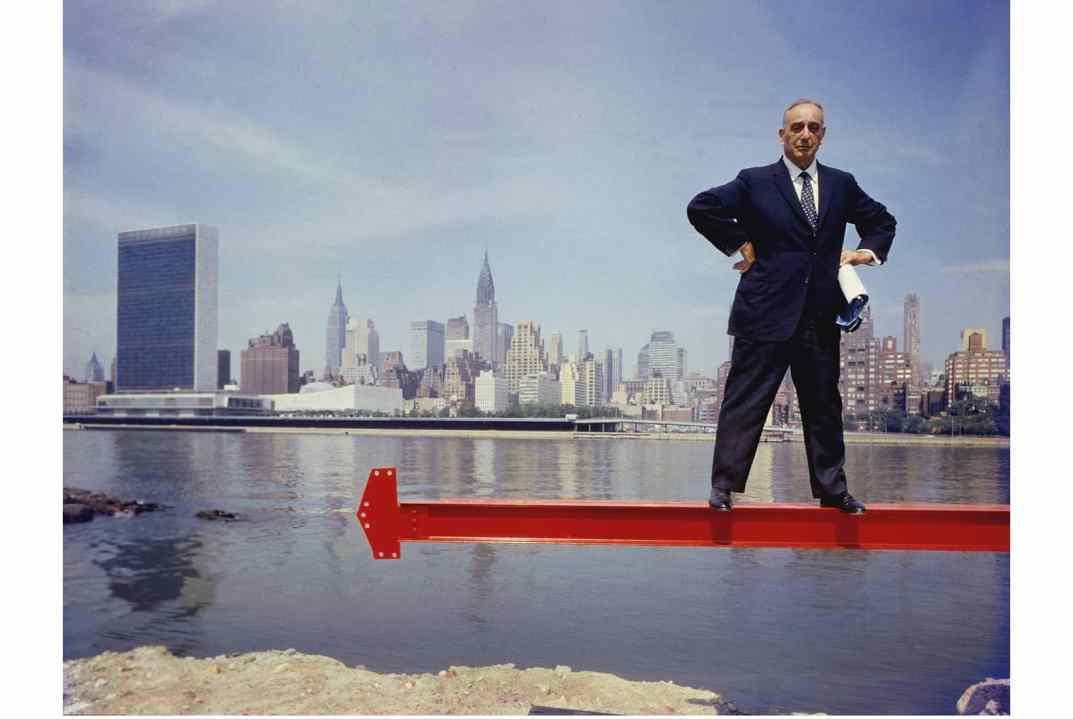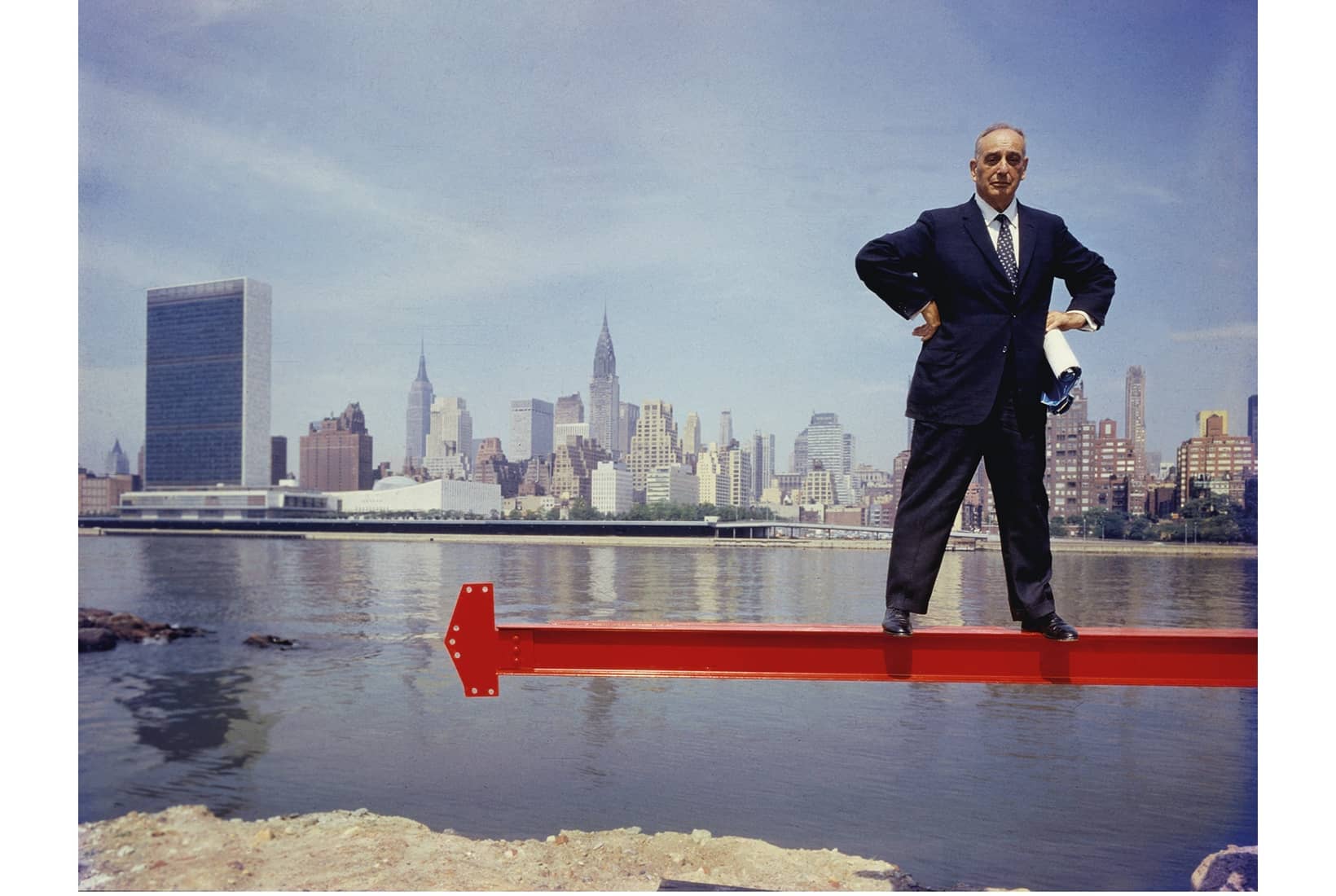Robert Moses was the man, they say, who built New York. He was never elected to anything, yet he had absolute control of all public works in the city for more than 40 years, until 1968. His record was mind-bending. He personally conceived and directed the building of 627 miles of New York parkways and expressways, seven of New York’s bridges, the Brooklyn-Battery Tunnel and the entire Long Island highway system; he built the Lincoln Centre arts complex, the United Nations, Jones Beach Park, JFK airport, Central Park zoo and the Shea Stadium; he built 658 playgrounds, 11 swimming pools, 673 baseball pitches and cleared thousands of acres of slums; he put up tower blocks for hundreds of thousands of families; he created vast acres of state parks and the Moses-Saunders Power Dam on the St Lawrence, one of the world’s engineering wonders.
Yet for all his mighty achievements, he is largely unknown in Britain. Partly because his reputation in America was demolished way back in 1974 by a mighty 1,300-page book by Robert Caro called The Power Broker: Robert Moses and the Fall of New York. As Caro tells it, Moses took power by seeing power where others hadn’t – in the boring agencies of state government that ran the parks and roads. As head of the innocuous-sounding Triborough Bridge and Tunnel Authority, he received every toll paid on every road and bridge in New York, a vast income that was immune from government interference. Moses used the revenue to build other toll projects, a cycle that would feed on itself, giving him control over all of Gotham.
His working life – he routinely put in 17-hour days – was facilitated by a vast expense account with teams of secretaries, chefs and chauffeurs. He died in 1981, aged 92. Considering what he built, his life sounds like a cause for celebration. Except for one thing: Moses was a psychopath. If power is a drug, then Moses was a massive user. His undoubted genius hid a vindictive, cruel personality that became deranged. His façade was ever the humble public servant. Yet he despised the poor, especially if they were black or Puerto Rican.
Moses was a psychopath. If power is a drug, then he was a massive user
Though there is talk of a Netflix series, there is still no film about this extraordinary man. The Bridge Theatre, however, has taken up his story. Nicholas Hytner is directing a new play the theatre has commissioned from David Hare. ‘It’s the greatest work of non-fiction I’ve ever read,’ says Hytner of Caro’s book. ‘The first thing you realise is that there isn’t a play in the Caro book because it’s just too immense. The play David has written is narratively narrower than the book. It’s about who Moses is, what he stands for, and what might resonate for audiences today.’ Ralph Fiennes will play Moses. Hytner reckons ‘that slightly mad glint in his eye’ should come in useful. Hare, incidentally, has form at writing villains. Back in 1985, he co-invented a fictitious newspaper tycoon, Lambert Le Roux, for his comedy Pravda. Anyone who saw it will remember Anthony Hopkins, fists balled, face jutting, like a human mastiff: ‘Who are you? You’re fired.’
‘This is a much subtler play than Pravda,’ says Hytner. ‘It’s not a big, ribald epic. It’s a more private play.’ It presumably helps that villains are all the rage and good box office? ‘I wouldn’t say we are doing this just because Moses was a villain. But it is true – if you get a villain right, it always works.’ Moses was actually a most sophisticated man. He was a visiting Rhodes scholar at Oxford who wrote a book about the British civil service. He loved the English poets. He was a big Dr Johnson fan and he knew screeds of Shakespeare by heart. Throughout his life, he was dapper, handsome, always the perfect host, always civil to his wife.
It is the case against Moses that makes the book so gripping. Moses used the grovelling New York press to smear and ruin those who crossed him. New York’s succession of mayors and governors were ultimately all in his power. He became indispensable. But it’s Moses’s racism that is the most potent charge against him today. According to Caro, he designed bridges too low to allow buses – the only form of transport for the under-paid minorities – to leave the city to get to his lovely beach park on Long Island. His contempt was revealed in little details. He had decorated the ‘comfort stations’ in Riverside Park with curling wrought-iron waves. But in the Harlem section alone the decorations are monkeys. Of the 255 playgrounds he built in the city in the 1930s, Harlem got just one. He also demolished swathes of perfectly good housing – with no regard for the evicted – for multi-lane expressways that choked up with traffic as soon as they opened. He left the city’s subway system to rot and spurned the idea of modern light railways, even to the airport. The city on his long watch became an Autogeddon of fuming cars and fuming drivers.
The play, Hytner says, is about ‘how an unelected autocrat operates in a democracy, how attractive they may seem, how disastrously they turn out. It’s about a splendid vision that curdles.’ Hare has put into his play a woman who was edited out of the book, for reasons of length. Jane Jacobs (played by Helen Schlesinger) was a ballsy activist and an influential urban theorist who was deeply anti-Moses and very pro-people. She dreamed of community living and the thriving street corner; Moses dreamed of the wrecking ball. Jacobs actually beat Moses in a notable battle to stop him building a road through Washington Square Park.
Moses doesn’t seem to have liked women very much. It was a factor in his eventual undoing. When he decided to tarmac over a dappled glade in Central Park much used by toddlers, the well-to-do mothers and mink matrons in the locality got militant. At a hearing Moses slammed his palm down, insisting that there was no opposition: ‘There is nobody against this: NOBODY, NOBODY, NOBODY but a bunch of… a bunch of MOTHERS!’ He was defeated by a tsunami of mum rage.
By the time he retired, he had spent $27 billion on public works. So one has to ask: what about the upside? After all, he never enriched himself and he was pro-cars in an age when everyone loved cars. ‘There is a pro-Moses case which the play will make,’ says Hytner. ‘As well as the grievous assaults on the city’s infrastructure, there are many things about New York which wouldn’t have happened without him – for example, the Verrazzano bridge is one of the most beautiful bridges ever built. It’s true, Moses was defiantly unsympathetic. But [about his housing schemes] it is perfectly reasonable to say that the rat-infested tenements of the Bronx was no life for the inhabitants.’
The Moses urban vision of roads and tower blocks lives on. It breeds banality and inhumanity. Modern Chinese cities are Moses on steroids. London is little better. And Americans still obey the greatest of Moses’s commandments: Thou Shalt Drive. The joke being that Moses himself never learned how to.
Straight Line Crazy is at the Bridge Theatre until 18 June, and will be broadcast in cinemas on Thursday 26 May as part of NT Live.







Comments